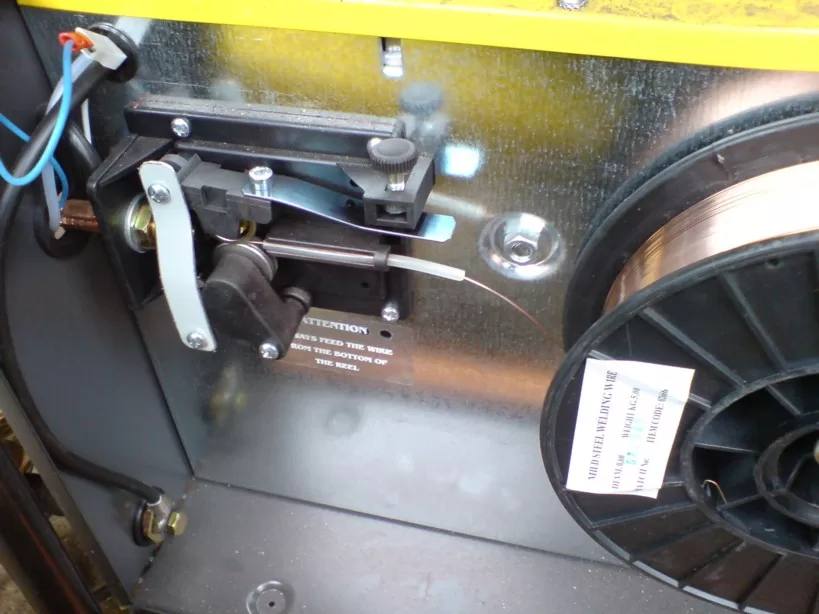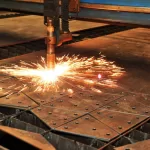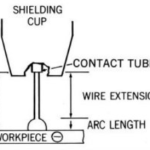The majority of troubleshooting calls we receive regarding the GMAW (MIG) process have to do with erratic wire feeding. This problem disguises itself in many forms, from bad-looking welds to lack of penetration. Sometimes the effects of poor feeding are obvious and easily corrected. However, sometimes these effects are not easy to troubleshoot and correct.
If you suspect that you are having problems associated with erratic feeding use the list below to troubleshoot the issue before sending your machine to a service shop. There are times certainly are times when the equipment is faulty, but over 90% of troubleshooting calls are process and equipment setup related.
Causes and remedies for erratic wire feeding:
Dirty/clogged liner
– over time the liner in your gun will collect “junk” that gets passed through it. This includes wire lubricant, dust, dirt, copper flakes created by excessive drive roll tension, moisture, and other contaminants. This will dramatically increase the friction and restrict the wire as it tries to go through the liner. This will manifest itself as arc flaring, inconsistent feeding, inconsistent wetting at the toes, and in some cases reduced penetration.
Remedy: Change the liner
Incorrect tip size
– contact tips typically are large enough to accommodate the wire they are intended for plus an extra few hundredths of an inch. At times the tip may not be manufactured to spec or the welder incorrectly selects a smaller tip. A small ID can drastically reduce wire feed speed and cause the wire to fuse to the tip. Also, if you have to use a tip that is larger than the wire diameter you are running in order to have good feeding you definitely have other problems. A bigger tip is just a temporary fix. Go out there and find the root cause.
Remedy: Use the correct contact tip
Oversized wire
– although not very common this can cause feeding issues. Manufacturers draw the mig wire down to size by a series of dies. As these dies wear out they need to be replaced. If they’re not replaced in a timely manner the wire will have inconsistencies including improper size.
Remedy: Switch to a different spool of wire (can use the same brand but look for a different manufacturing lot, or switch brands)
Incorrect drive roll tension
– Newer wire feeders will have a gauge for selecting the proper tension for the type of wire you are using; however, older models do not. It is possible to have too much or not enough tension. If tension is set too low then you will get a wire slip at the rolls. This will manifest as arc flaring and erratic feed. If tension is too tight you may deform the wire (especially aluminum and flux-cored wires) or cause copper flaking in mig wires.
Remedy: If the wire is slipping increase tension – however, check spool tension as well. The problem may be the spool tension is set too high. If the wire is being crushed and deformed causing erratic feed as it struggles to pass through the tip then decrease drive roll tension.
Incorrect spool tension
– The tension on the spool is important because if it is too low it will allow the spool of wire to keep spinning after the trigger is released. This causes unspooling which later leads to wire tangling. If it is too high then the drive system struggles to pull the wire and the wire slips.
Remedy: Use proper tension. To select proper tension do a trigger pull and stop. The spool should stop when the trigger is released. Keep lowering tension until the spool barely spins after the trigger is released. This way you have the lowest tension possible without creating the tangling issue.
Gun loops/length
– Standard mig gun lengths are 12 and 15 feet. When using 20 and 25-foot mig guns another problem is introduced. If we are welding close to the welding machine the gun cable will be looped one or more times This increases friction and makes feeding a challenge. The softer the wire the worse the problem gets.
Remedy: Use the shortest length of the mig gun possible. Get rid of small radius loops on the gun lead and try to make big arcs with it if you are welding close to the wire feeder. If necessary, increase drive roll tension to help push the wire (this is only a temporary fix as it may create other problems). If using metal-cored or flux-cored wires consider going to a larger size or switching to a solid wire in order to increase columnar strength and improve feedability.
There are many more problems that will cause erratic feeding including incorrect selection of welding parameters, overheating of the mig gun, incorrect spooling and/or winding by the manufacturer, and many others. When troubleshooting erratic feeding make only one change at a time. If you change drive roll tensions, get a new contact tip, extend the gun, and loosen the spool tension all at once you may correct the issue temporarily but create problems down the line. Good luck!










